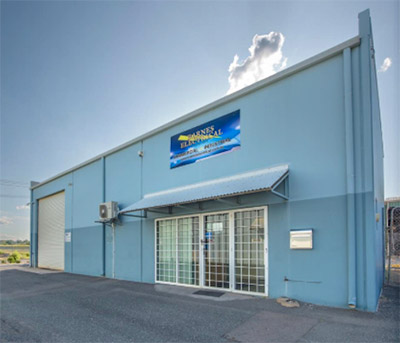In an uncertain economy, commercial property still offering stellar returns
Kevin Porter, Chief Investor of Commercial Property Secrets, retired at the age of 39 thanks to the cashflow generated by commercial property income. He offers insight, and examples, into how commercial property investment can deliver high cash flow and attractive returns.
With constant rate rises, speculation about an imminent recession, and general economic uncertainty, it is difficult to invest with confidence.
Interest rate increases have had a detrimental effect on investors’ cashflow, while and their borrowing power has also diminished.
Building that investment portfolio is as challenging as it’s ever been.
Kevin Porter, Chief Investor, Commercial Property Secrets, retired at the age of 39 thanks to the cashflow generated by commercial property income.
Here, he offers some compelling arguments for commercial property investment supported by an equally persuasive case study.
Cashflow from day one
Is now the time to look at a commercial property as the next step? With the lure of higher rents and longer leases, more and more investors are looking at commercial property to balance out their portfolio.
Choosing the right commercial property pays cash from day one. In the world of commercial, tenants are the ones that pay property expenses such as rates, water, and land tax. This in turn generates better cashflow than residential properties.
Powering the next purchase
Investors love positive cashflow, and so do banks.
Savvy investors recognise that property investing is a finance game. The stronger a cashflow position, the better the chances of securing lending with the bank.
Building a property portfolio gets a bit easier when there’s excess cash coming in. Not only that, most commercial properties have built-in rent increases, which means your cashflow grows each year.
Mortgages tend to be interest-only in commercial, so the extra cash left in the bank account each month opens up more options.
Depending on where they are in their investment journey, some take advantage of the excess cashflow to pay down their mortgages or opt for principal and interest repayments. This not only provides an even better cashflow position moving forward but provides even better upside for the future.
What about capital growth?
It’s a myth that commercial property doesn’t have the same capital growth prospects as residential property. It’s simply not true.
Commercial property values have risen in line with residential properties over the past two years, with some markets increasing as much as 25-30 per cent.
In commercial property, the value of the property is intrinsic to the rent. By increasing the rents, the value of the property can go up too. This is what makes commercial property an attractive choice for property investors who want to take it to the next level.
Perceptions and profits
To some, the perception of commercial property is that it is a risky and expensive asset class requiring high initial deposits.
To contrast these perceptions, below is example of an actual purchase made in the current market that illustrates not only the cashflow on offer, but the relative ease with which most investors can access this property type.

| Regional Queensland | Industrial warehouse |
|---|---|
| Purchase price | $440,000 |
| Deposit (20%) | $88,000 |
| Purchase costs | $21,500 |
| Total cash required | $109,500 |
| Net rent | $39,000 |
| Net yield | 8.86% |
| Mortgage | $19,360 (5.5% interest rate) |
| Yearly cashflow after mortgage | $19,640 ($39,000 - $19,360) |
| Cash on cash return | 17.94% ($19360 / $109,500) |
| Yearly capital growth | $17,600 (4% per year) |
| Total returns per year | $37,240 |
Key points about this purchase
Deposit – Deposits of 30 per cent are generally the norm for commercial property, however, more banks are now coming to the party with 20 per cent deposits for certain purchases. Some investors may still opt for a larger deposit, which in turns leads to a wider choice of banks, less borrowing and more cashflow.
Risk – Regional properties tend to bring higher yields but higher risk. To mitigate risk, this property came with four years to run on a five-year lease, as well as a tenant who had been in business for more than 20 years. Rent increases are tied to yearly CPI and as a bonus with this property, the annual CPI increase kicked in the week of settlement.
Return – In the first year, cashflow was a very healthy 17.94 per cent return on investment. Factoring in a conservative 4 per cent annual capital growth rate, this added another $17,600, bringing the grand total in the first year to $37,240, or a 34 per cent return.
These numbers show how choosing commercial property can supercharge a portfolio. Some investors opt for diversification in both residential and commercial, but more and more investors are hopping into commercial property as their sole asset of choice.
Note: The case study property was purchased as part of a long-term hold strategy by Kevin Porter for his own portfolio.
Disclaimer: Information provided is general in nature and is not to be interpreted as individual advice. It does not take into account your personal objectives, financial situation or needs.




















